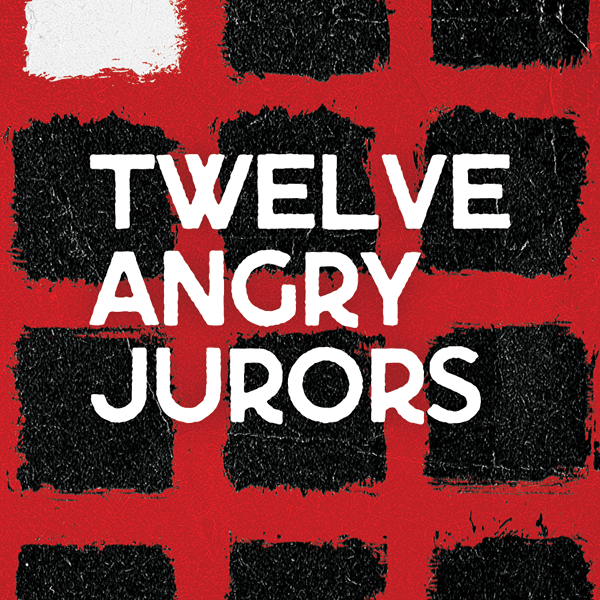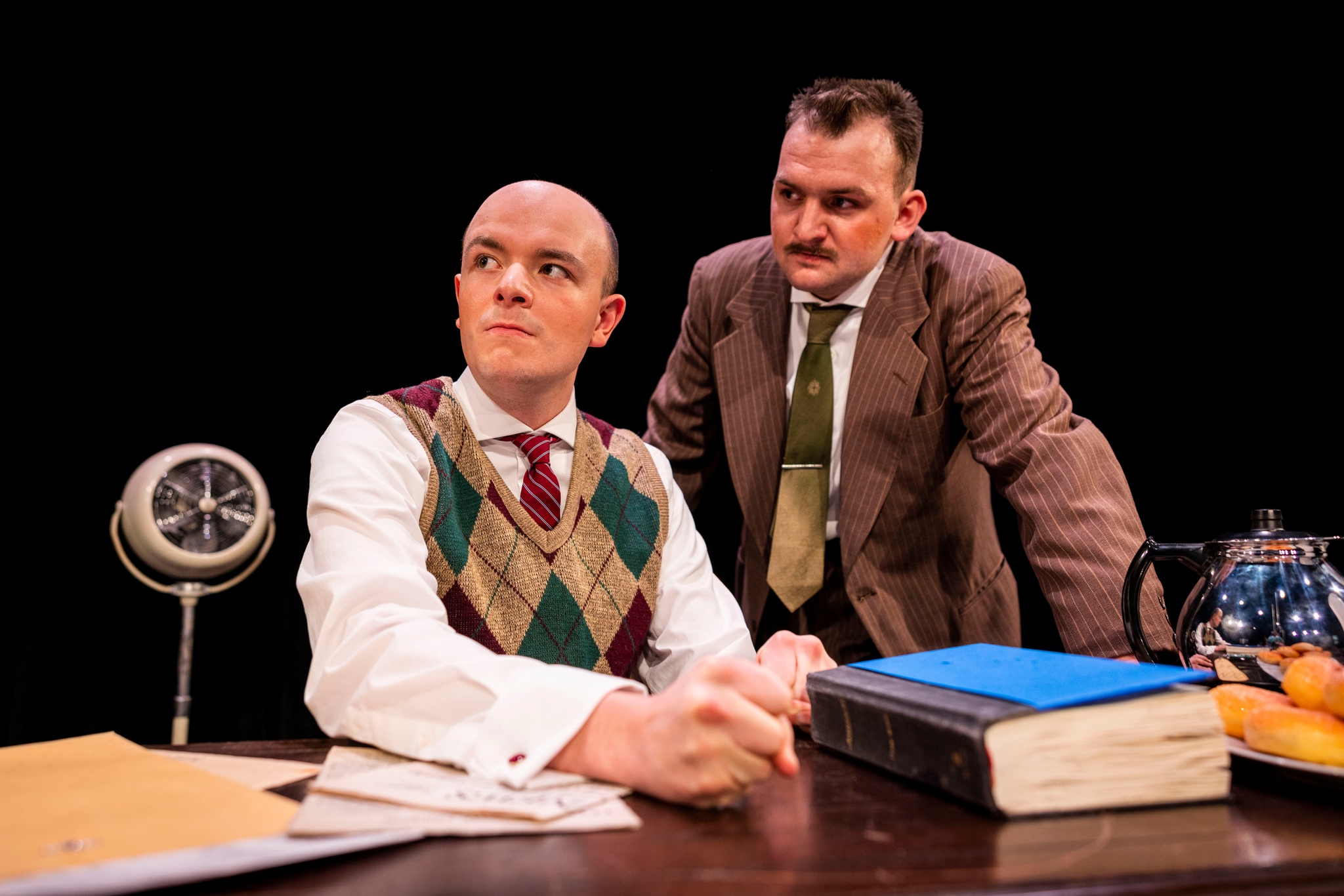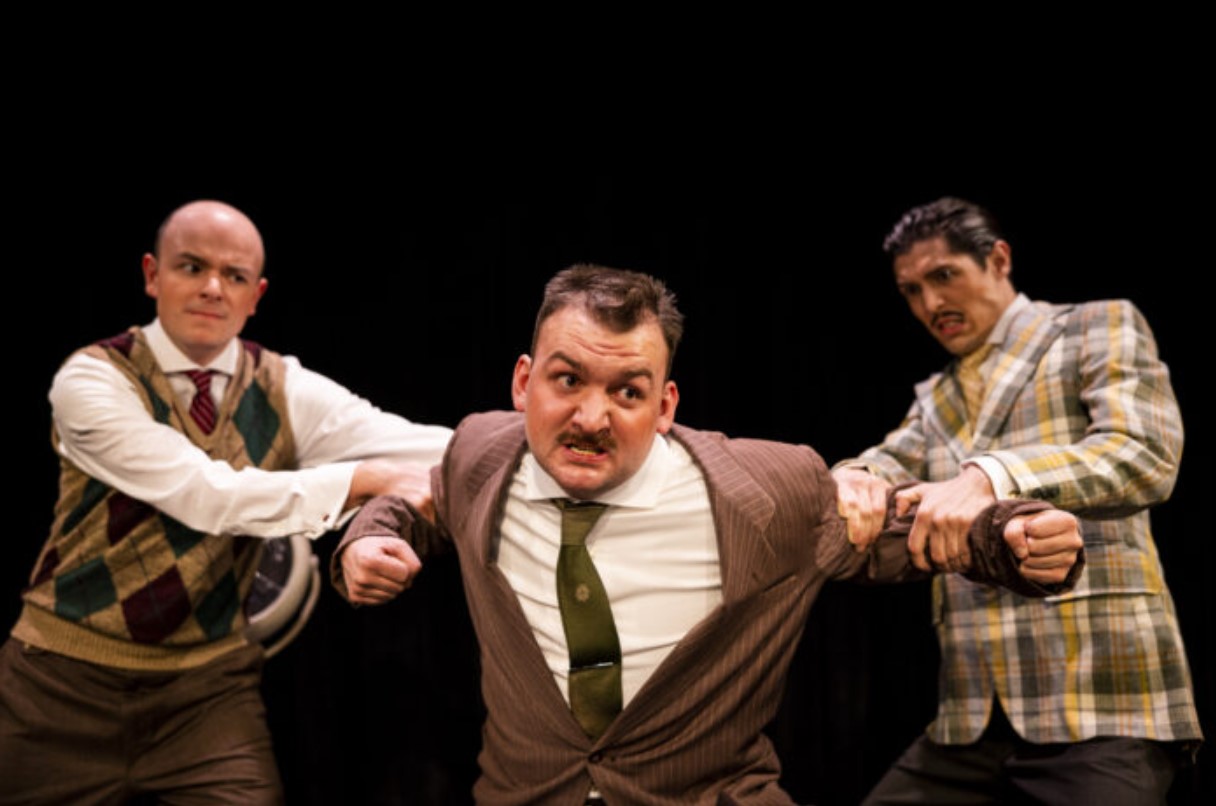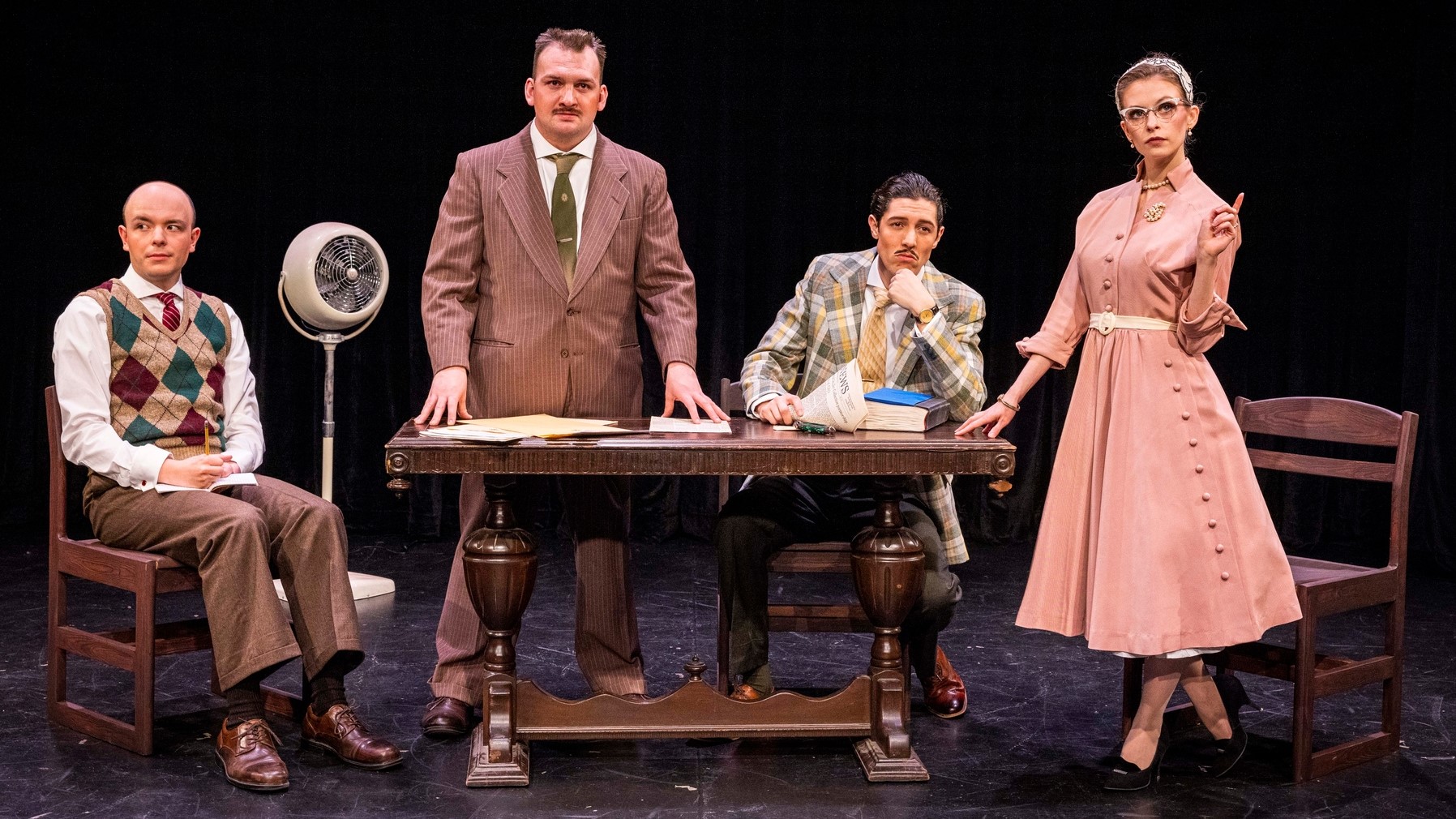PROVO — For decades, the Theatre and Media Arts Department at BYU has excelled most in two things: training performers in a realistic acting style and mounting classic plays. This makes Twelve Angry Jurors the ideal choice for the company. The script is a workhorse of the American theatre, and every minute demands raw realism from its performers. Under David Morgan‘s direction, this talented cast delivers a flawless production that is gritty, moving, and thoughtful.

In Twelve Angry Jurors, the fate of a 19-year-old man accused of murder hangs in the balance as a jury of his peers must decide on the question of his guilt. The trial occurs before the beginning of the play, and the audience only sees the closed-door deliberations. At the jury’s first vote, 11 people vote for guilty, and only 1 votes for acquittal. The rest of the night is a lively debate about whether the evidence warrants a conviction.
The play serves as a microcosm of 1950s America, portraying a wide cross-section of citizens, including an immigrant, a nativist loudmouth, an elderly woman trying to get by, and more. While dressed in 1950s clothes, these archetypes still inhabit this country, making Twelve Angry Jurors relevant today. Sherman L. Sergel’s script (adapted from the teleplay by Reginald Rose) has had some updates over the years, resulting today in a play that deftly balances modern sensibilities with the realities of life in the mid-20th century.
Morgan has an instinct for the rhythm of the play; the quiet moments (such as when Juror #9, played by Marion Pack, explains an elderly person’s need to be noticed) are just as profound as the dramatic discussions about life and death. Ironically, Morgan’s direction is successful because Twelve Angry Jurors does not look directed at all; instead, it is a naturally unfolding argument among a dozen people. It is all painfully real: the movement, the emotions, the overlapping chatter of the arguments, and more. Nothing is artificial — and that is one of the hardest things for a director to execute.

It takes a stellar ensemble cast to creating those natural interactions, and Twelve Angry Jurors has a cast that is up to the challenge. Indeed, this cast is not just actors playing characters; they are embodying their characters. Every glance, every line was viscerally authentic. As the holdout Juror #8, Darci Ramirez was a dignified presence, and her softspoken nature and calm persistence were made me believe that she could convince the other jurors to re-examine the evidence. Caleb Brown (as Juror #7) and Jared Kamauu (as Juror #10) played off each other well, with Brown’s character’s casual sexism and Aro’s character’s ethnic bigotry serving as ugly (but not overwrought) intrusions into the ideals of the justice system. As Juror #4, Ondine Garner gave a memorable performance. Her steely glare at the other jurors who considered irrelevant issues and the character’s skepticism about alternative interpretations of the facts injected a dose of rationality into the arguments for guilt. The other cast members were no less impressive in their performances.
Morgan staged Twelve Angry Jurors in a black box theater with a thrust-style stage. This brings the audience up close to the action, but it also exposes the show to intense scrutiny. This production of Twelve Angry Jurors holds up exceptionally well, though, because of the artists’ attention to details. Erin Solomon’s props and Katelyn Hales’s set perfectly match the period and create a vivid backdrop of a stark space that is devoid of comforts so that jurors can focus on the case. Lighting designer Taylor Tew Nelson ingeniously showed the passage of time by having the lighting outside of the windows gradually change colors to create the illusion of the sun setting outside in real time.

The most impressive technical contribution, though, came from costume designer Kyrra Elmer. Within the constraints of early 1950s fashions, Elmer created costumes that perfectly illustrated the characters’ social status and background. Garner wore an elegant dress (that Lucille Ball could have worn on I Love Lucy), cat eyes glasses, and broach that said just as much about Juror #4 as any of the character’s scripted lines. The contrast with the simple dress that Juror #11 (an immigrant played by Joy Asiado) was sharp and did much to establish the extremes in the jurors’ social positions. I appreciated Elmer’s ability to explore the variety of the period’s fashion, especially in the varying cuts, cloth, and styles in the women’s dresses. The men were dressed in white shirts, ties, and either suit coats or a sweater. But Elmer took advantage of the diversity in colors, patterns, and styles to create a visual style that emphasized the differences among the male jurors.
Thanks to the performances, the costumes, the set, and even the accent work (from dialect coach Joanna Noall), Twelve Angry Jurors is a time machine that takes its audience to 1950s Boston. Nothing on stage will remind the audience of the 21st century, nor is there a hint that the actors live in Utah. Given the excellence on stage in BYU’s production of Twelve Angry Jurors, I encourage readers to see this wonderful production.
[box]Twelve Angry Jurors plays Wednesdays through Saturdays at 7:30 PM and Saturdays at 2 PM through March 4 at the Studio Theatre in the West Campus Building on the campus of Brigham Young University. Tickets are $11-16. For more information, visit byuarts.com.[/box]
